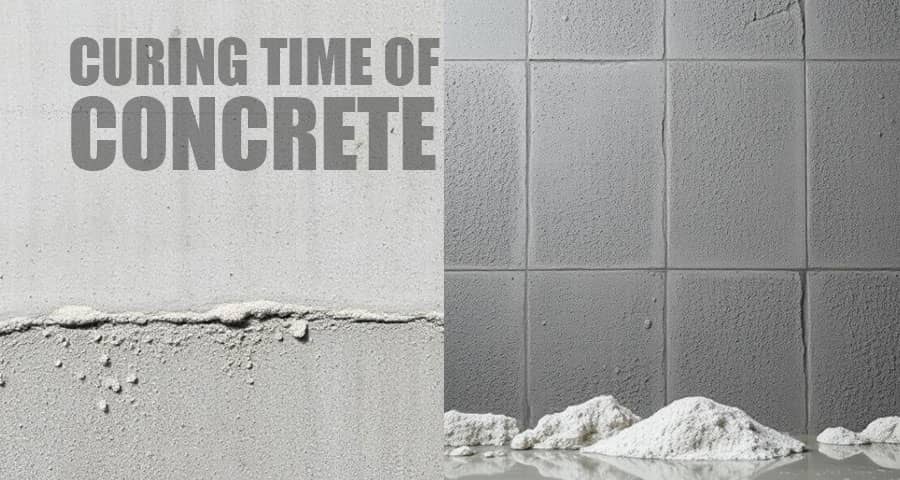How Do You Reduce the Curing Time of Concrete?

Concrete curing is an essential process in construction that directly influences the strength, durability, and longevity of the structure. However, in fast-paced projects, reducing the curing time of concrete becomes critical. By adopting the right mix of science, strategy, and technology, we can accelerate the curing process without compromising quality.
Below, we provide a comprehensive guide on how to effectively reduce the curing time of concrete, using practical, proven, and advanced techniques.
Understanding the Basics of Concrete Curing
Curing refers to the process of maintaining adequate moisture, temperature, and time to allow concrete to achieve its desired properties. Typically, standard curing takes around 28 days to reach full strength. However, this duration can be reduced significantly through methodical interventions.
1. Use of Accelerating Admixtures
One of the most effective ways to reduce curing time is by using accelerating admixtures.
- Calcium chloride (CaCl2) is the most commonly used accelerator. It speeds up the hydration process, leading to faster strength gain.
- Non-chloride accelerators like calcium nitrate, sodium thiocyanate, and triethanolamine are suitable for steel-reinforced concrete to prevent corrosion.
These admixtures reduce the setting time and allow for earlier finishing and loading of the structure.
2. Employing High-Early-Strength Cement
Using Type III Portland cement, also known as high-early-strength cement, can dramatically cut down the curing time.
- It contains finer particles which hydrate faster.
- Achieves design strength in 7 days or less, ideal for precast and emergency constructions.
This type of cement is widely used in cold weather conditions or when fast-track construction is required.
3. Optimizing Water-Cement Ratio
The water-cement (w/c) ratio plays a critical role in concrete strength and curing time.
- A lower w/c ratio reduces curing time but must be balanced with workability.
- Typical range for accelerated curing is 0.35 to 0.45, ensuring adequate hydration and fast strength gain.
We recommend using superplasticizers to improve workability while maintaining a low w/c ratio.
4. Applying Steam Curing Techniques
Steam curing is an advanced method that accelerates the curing process through controlled heat and moisture.
- Involves placing concrete elements in a steam chamber or covering them with moist blankets.
- High-pressure steam curing (autoclaving) is common in precast concrete manufacturing.
- Helps concrete reach 70% of full strength in 1 to 3 days.
This method is ideal for large-scale industrial projects, where time efficiency is crucial.
5. Implementing Heat Curing in Cold Weather
In cold climates, the ambient temperature slows down hydration. Heat curing is essential to counteract this:
- Use heated enclosures or heated blankets to maintain concrete temperature above 10°C (50°F).
- Use insulated formwork to retain internal heat during curing.
- For flatwork, infrared heaters or heated mats can be deployed.
This ensures early strength development and prevents frost damage.

6. Using Rapid Hardening Cement
Rapid hardening cement is engineered to gain strength quickly.
- Can achieve 28-day strength in just 3 to 7 days.
- Ideal for road repairs, overlays, and structural precast.
Common examples include Rapid Set® Cement and Calcium Aluminate Cement (CAC), used in high-performance environments.
7. Enhancing Mix Design with Pozzolans
Incorporating pozzolanic materials like fly ash, silica fume, and slag improves the hydration process and reduces permeability.
- Silica fume accelerates early strength due to its ultrafine particles.
- Metakaolin is another high-reactivity pozzolan that boosts curing.
An optimized mix with supplementary cementitious materials (SCMs) can significantly cut down the curing duration.
8. Utilizing Concrete Curing Compounds
Curing compounds form a protective membrane on the surface, retaining moisture and enhancing internal hydration.
- Ideal for large slabs and outdoor applications.
- Products based on acrylic resins or water-based waxes offer excellent results.
Application should be done immediately after final finishing, ensuring even coverage.
9. Incorporating Fiber Reinforcement
Fiber-reinforced concrete (FRC) gains strength more uniformly due to better crack resistance and load distribution.
- Common fibers: glass, polypropylene, steel, and synthetic fibers.
- Accelerates early load-bearing capability, allowing for reduced curing periods in certain applications.
FRC is particularly effective in pavements, industrial floors, and tunnel linings.
10. Reducing Curing Time Through Proper Site Practices
Site preparation and execution play a vital role in minimizing curing time:
- Ensure thorough compaction to eliminate voids and improve hydration efficiency.
- Use vibration tools to enhance particle consolidation.
- Protect the concrete from wind, sun, and rain immediately after placing.
Maintaining consistent curing conditions across the site avoids delays and ensures quality.
11. Leveraging Modern Technologies
New-age solutions help monitor and accelerate the curing process:
- Maturity meters measure temperature and time to estimate strength development in real-time.
- Self-healing concrete and nano-enhanced additives are transforming curing dynamics in high-tech construction.
These tools help engineers make data-driven decisions to speed up schedules and reduce downtime.
12. Monitoring and Testing for Early Strength
To ensure reduced curing doesn't compromise performance:
- Perform slump tests, compressive strength tests, and temperature monitoring.
- Follow ASTM standards for field-cured cylinders to confirm early strength targets.
- Use non-destructive testing (NDT) like rebound hammers or ultrasonic pulse velocity (UPV) for quick insights.
A combination of testing and monitoring ensures compliance and safety even with reduced curing durations.
Conclusion
Accelerating the curing time of concrete is not just feasible - it is essential for modern, efficient construction. By leveraging the right admixtures, mix designs, curing methods, and technologies, we can deliver high-quality concrete that meets or exceeds structural requirements in a fraction of the traditional time.
With proper implementation, these strategies not only save time but also reduce labor, improve scheduling, and increase overall project profitability.
Please view the following short video for Reduce the Curing Time of Concrete
